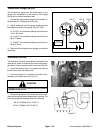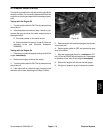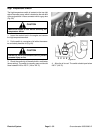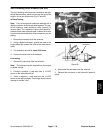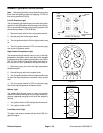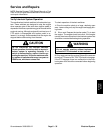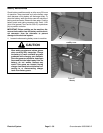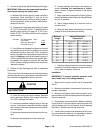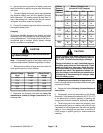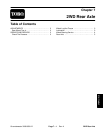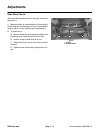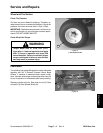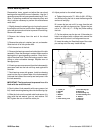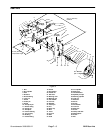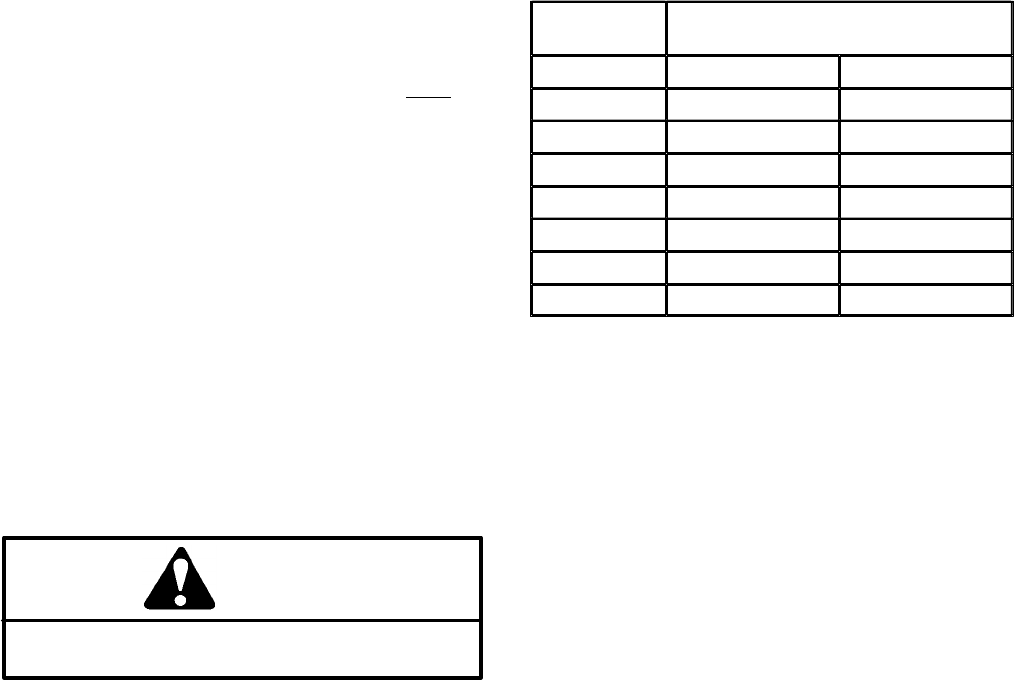
2. Conduct a hydrometer test of the battery electrolyte.
IMPORTANT: Make sure the area around the cells is
clean before opening the battery caps.
A. Measure the specific gravity of each cell with a
hydrometer. Draw electrolyte in and out of the
hydrometer barrel prior to taking a reading to warm–
up the hydrometer. At the same time take the tem-
perature of the cell.
B. Temperature correct each cell reading. For each
10_F (5.5_C) above 80_F (26.7_C) add 0.004 to the
specific gravity reading. For each 10_F (5.5_C) be-
low 80_F (26.7_C) subtract 0.004 from the specific
gravity reading.
Example: Cell Temperature 100_F
Cell Gravity 1.245
ADD (20_ above 80_F) 0.008
Correction to 80_F 1.253
C. If the difference between the highest and lowest
cell specific gravity is 0.050 or greater or the lowest
cell specific gravity is less than 1.225, charge the
battery. Charge at the recommended rate and time
given in Charging or until all cells specific gravity is
1.225 or greater with the difference in specific grav-
ity between the highest and lowest cell less than
0.050. If these charging conditions can not be met,
replace the battery.
3. Perform a high–discharge test with an adjustable
load tester.
This is one of the most reliable means of testing a battery
as it simulates the cold–cranking test. A commercial bat-
tery load tester is required to perform this test.
CAUTION
Follow the manufacturer’s instructions when us-
ing a battery tester.
A. Check the voltage across the battery terminals
prior to testing the battery. If the voltage is less than
12.0 VDC, recharge the battery.
B. If the battery has been charged, apply a 150 amp
load for 15 seconds to remove the surface charge.
Use a battery load tester following the manufactur-
er’s instructions.
C. Make sure the battery terminals are free of corro-
sion.
D. Measure the temperature of the center cell.
E. Connect a battery load tester to the battery ter-
minals following the manufacturer’s instruc
-
tions. Connect a digital multimeter to the battery
terminals.
F. Apply a test load of one half the Cranking Perfor-
mance (see Battery Specifications) rating of the bat-
tery for 15 seconds.
G. Take a voltage reading at 15 seconds, then re-
move the load.
H. Using the table below, determine the minimum
voltage for the cell temperature reading.
Minimum
Voltage
Battery Electrolyte
Temperature
9.6
70_F (and up) 21.1_C (and up)
9.5
60_F 15.6_C
9.4
50_F 10.0_C
9.3
40_F 4.4_C
9.1
30_F –1.1_C
8.9
20_F –6.7_C
8.7
10_F –12.2_C
8.5
0_F –17.8_C
I. If the test voltage is below the minimum, replace
the battery. If the test voltage is at or above the mini-
mum, return the battery to service.
Installation
IMPORTANT: To prevent possible electrical prob-
lems, install only a fully charged battery.
1. Make sure the ignition switch and all accessories
are off.
2. Make sure the battery compartment is clean and re-
painted if necessary.
3. Make sure all battery cables and connection are in
good condition and that the battery bracket has been re-
paired or replaced.
4. Place battery in its compartment. Make sure battery
is level and flat. Push the positive cable connector onto
positive battery post. Do not hammer; this will damage
the battery. Tighten bolts with two wrenches.
5. Install battery bracket and threaded rod to the bat-
tery rod and frame. Install lock nut and washer to battery
rod. Install lock nut to threaded rod (Fig. 68).
Electrical System
Page 6 – 38
Groundsmaster 3000/3000–D



